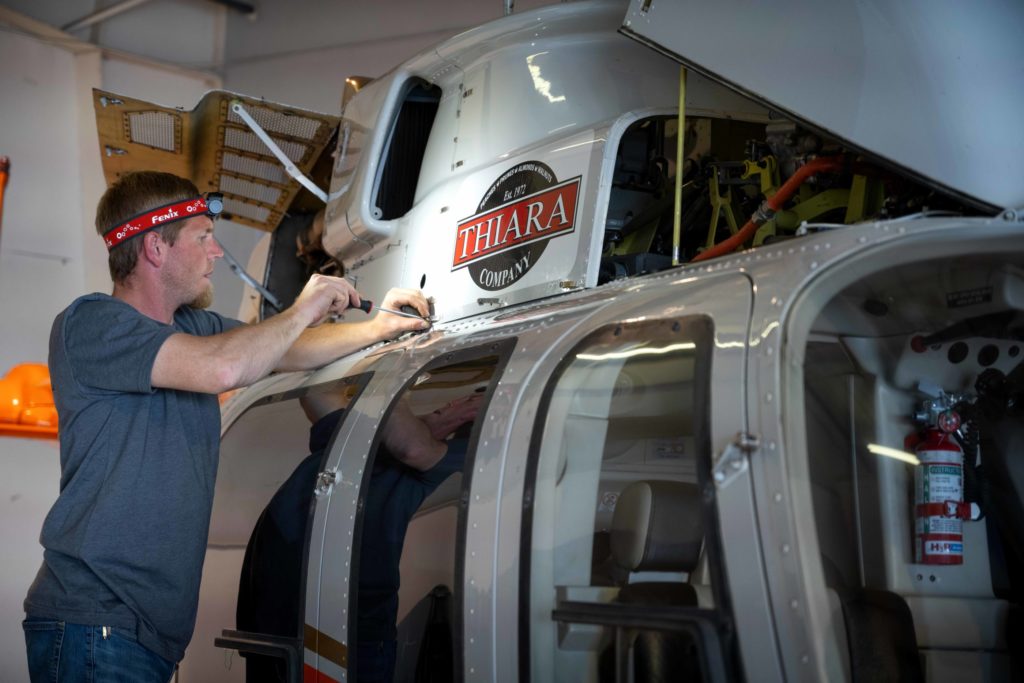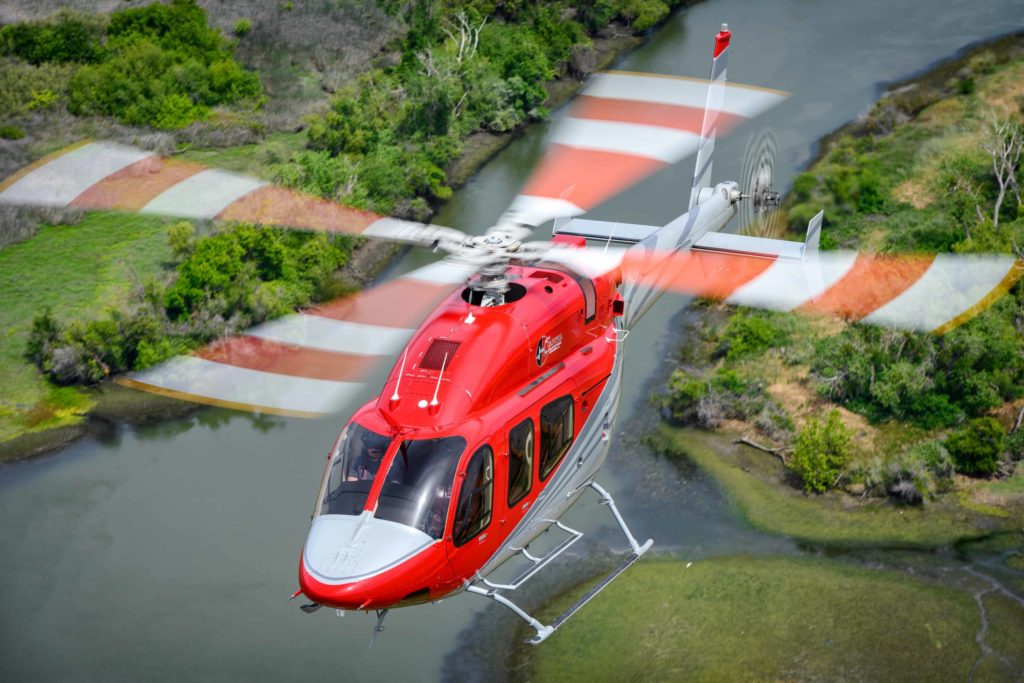Photos by Lloyd Horgan
Golden hour in California. Just after sunrise, the low angle of the light means it takes on seemingly magical properties beloved of photographers and film directors, and deep golden hues strobe off the rotors of a Sikorsky UH-60 Black Hawk as it races over the mountain sagebrush scrub. Underneath it is slung 920 US gallons (3,480 liters) of water destined for a wildfire that is threatening to grow out of control.
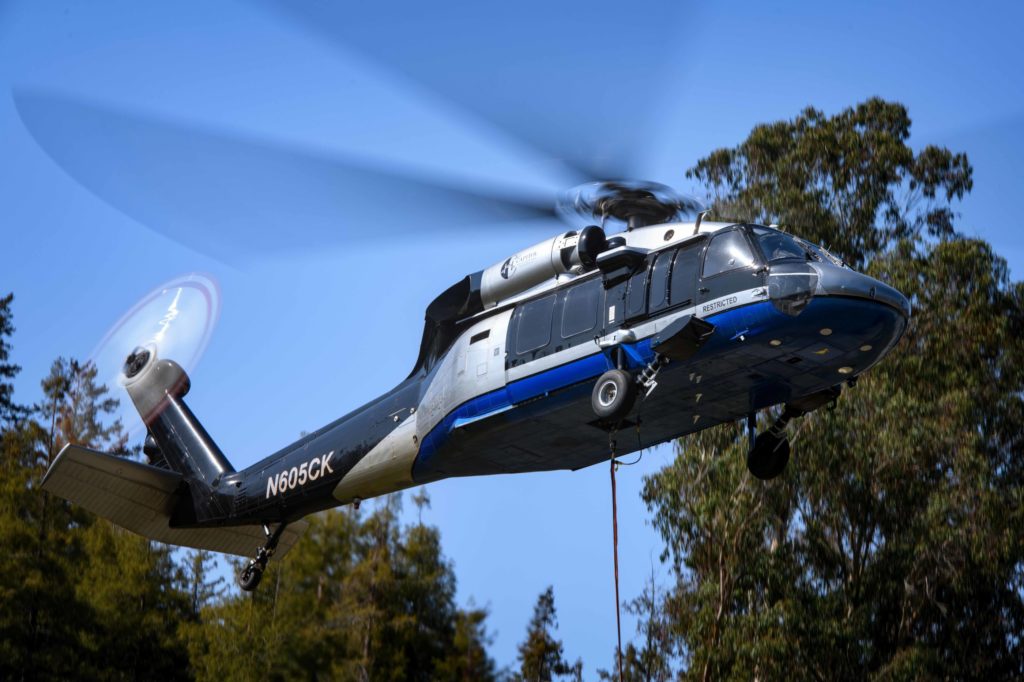
Elsewhere, while Bell 429s are prepared for a power line patrol, a stablemate Bell 407 returns from the walnut orchards north of Sacramento, its first task of the day already complete, with more work expected slinging loads into a remote construction site.
Throughout the day, the aircraft will come and go from Capitol Helicopters’ headquarters in Sacramento and its remote base at Santa Rosa in the Bay Area, before the sun goes down and the machines and crews can take a few hours rest ahead of another early start. The amount of activity belies the fact that the company has only been operating since 2018.
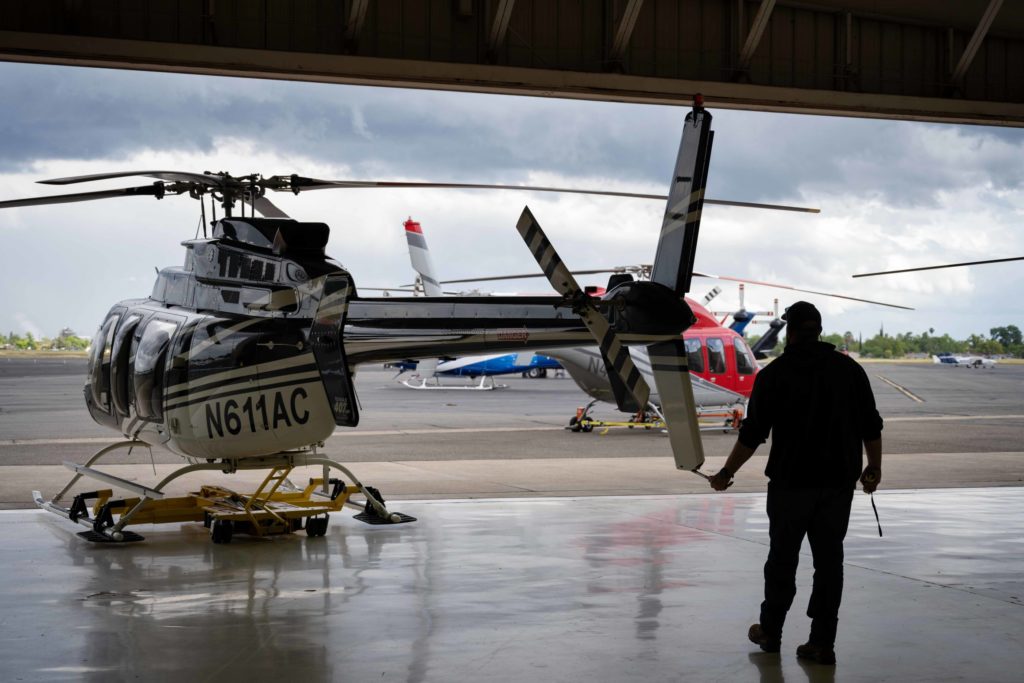
When Kaysha and Casey Ross bought a flight school with the idea of turning it into a successful utility operation, they couldn’t have predicted that less than four years later they would be running an operation with 10 aircraft of five different types.
Casey’s background was in construction. “I like building things,” he said. “With utility flying, you’re constantly working on projects and building. That’s what I like to be a part of.” While he had been flying privately since his 20s, his wife Kaysha brought experience from another aviation business. They now share their passions for business and aviation.
“I spent five years accounting for an aviation company,” she explained. “I found a love of aviation, and to get into an industry that not many people have the opportunity to do was exciting and new.”
Kaysha also brought experience from a prior business venture that has supported federal firefighting on the ground. “I knew that was a direction I wanted to go in,” she said. “We knew we could roll into it, and here we are!”
Casey explained some of the early priorities, among them solving the perennial and expensive “chicken and egg” conundrum of aircraft and client acquisition.
“The flight school that we bought were leasing their aircraft, but they had a lot of the certificates that were appropriate for us to get started,” he explained. “Goal number one was to get the aircraft we needed, but you can’t get the aircraft if you can’t prove what you’re going to do with them.”
The solution was bold. “We put it all on the line and bought the aircraft that we thought would do the job,” he said.
It paid off, but as well as good strategy, both Casey and Kaysha credit the people that make up the company for its success.
“We bought the right aircraft, and we built a fantastic team,” said Casey. “It’s really the team that we have right now that is driving our success. We just provided the tools to be able to do that.”
The right stuff
Those tools are mainly made up of the aircraft that the company operates. This was a critical early decision, predicated on meeting the needs of prospective clients.
However, the pre-eminence of Bell helicopters in the industry, as well as prior experience operating a 206, made the early decisions easier.

“If you don’t buy the right aircraft, the clients won’t hire them,” explained Casey. “But we were already fans of Bell’s products and service and part of our decision to buy aircraft is based on the people who fly them liking them.”
Kaysha explained that the pilots’ opinions were shared by the clients. “I knew a little bit about the [Bell] 407 from my prior employment,” she said. “I knew it was a good aircraft that our customers liked, so we started with a 407.”
The company’s single engine fleet now consists of three Bell 407s, one Eagle Single (a Bell 212 converted from a twin to a single engine), and one MD 530, which are all capable of flying power line patrols or sling loading. While the Eagle Single increased the capacity and weight the company could lift, this was later surpassed by three Sikorsky UH-60 Black Hawks. Purchased specifically for heavy utility and firefighting, the Black Hawks can lift a 920-US gallon SEI Industries Bambi Bucket, compared to the Eagle Single’s 340-US gallon (1,290-liter) capacity.
Acquiring these iconic aircraft was down to a combination of timing and desire, as Casey explained. “We sat down and talked about what we wanted to do next, and the feeling was that we aren’t going to be able to fly [Black Hawks] unless we buy one, so we bought one,” he said. “Since then, we’ve developed a passion for supporting and operating them, and that’s going to be a big part of our future.”
While the Bell 407s are still kept busy with light utility work, Capitol’s move into twin-engine machines is not confined to firefighting or medium-lift capacity. It reflects the company’s belief that the safety offered by a twin-engine type is likely to become a high priority among its customers. With this in mind, it recently took delivery of two new Bell 429 aircraft.
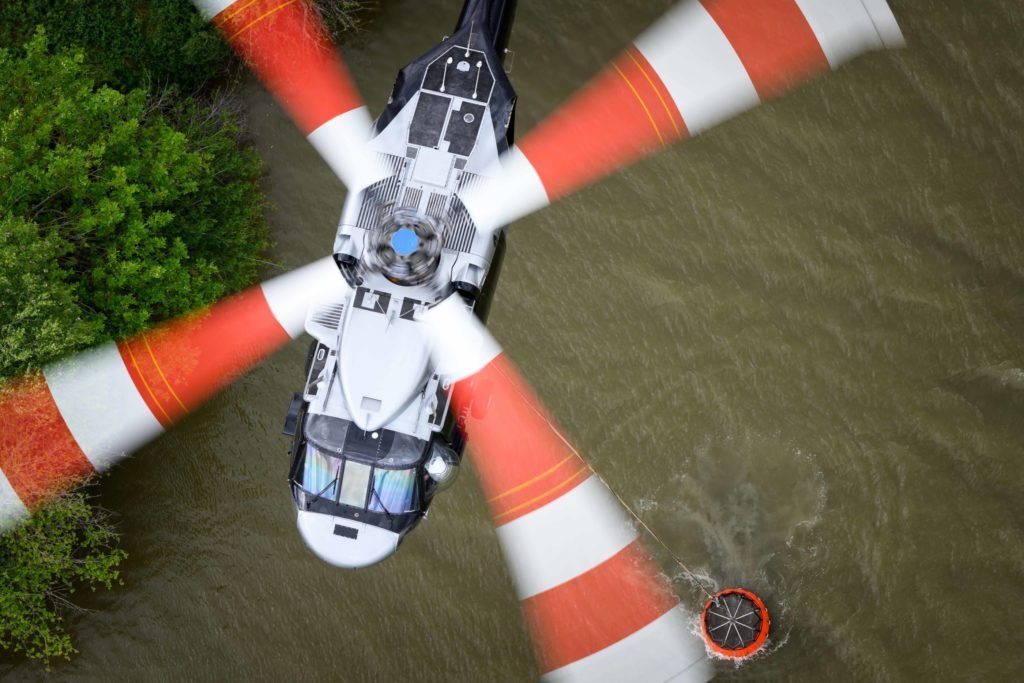
“The buzz in the aviation world is that a lot of customers are going to want to change to two engines,” explained Kaysha. “And the 429 checks all those boxes for them.”
So far that decision has been vindicated, with increased interest from power companies like Pacific Gas and Electric Company (PG&E).
“I’m told that as far as power, performance and safety goes, it’s top of the line,” said Kaysha about the Bell 429. “But the most benefit it has brought is that PG&E and their vendors are requesting the aircraft, so it’s brought a lot of opportunity for new work.”
One of the pilots flying patrols in the new 429s is Austin Bradley, who has been with Capitol for just over a year and is clearly enthusiastic about his work. “I love it,” he said. “I love the people we’ve got, and the aircraft. We take good care of them, we try to keep them pristine, and I love the mission.”
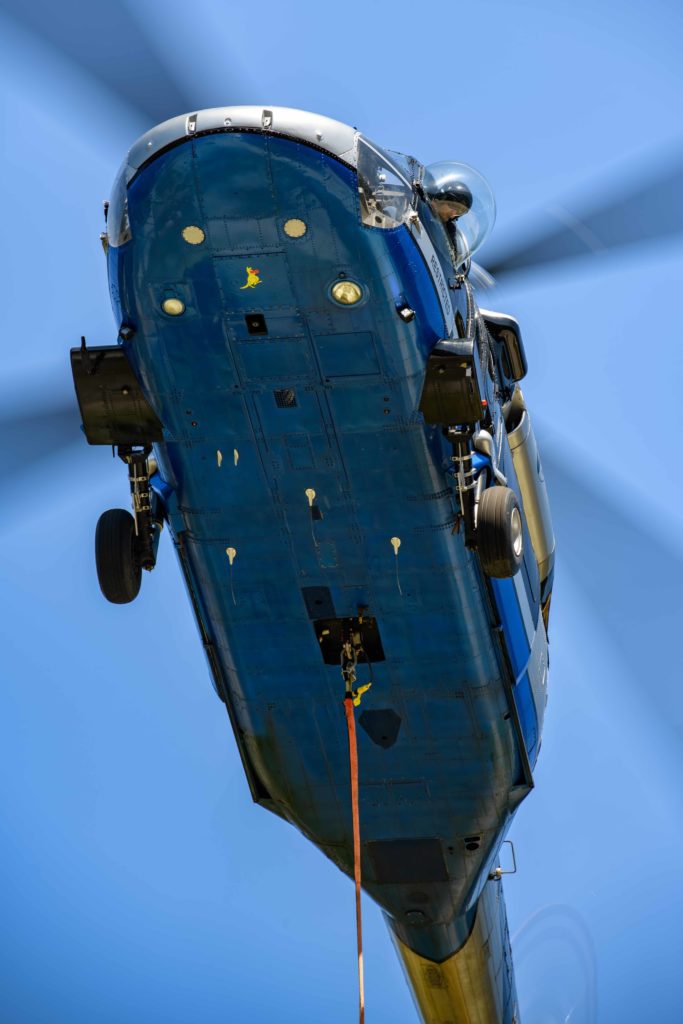
Having been introduced to aviation by his father, who also flies for Capitol, Bradley started his career with corporate flying in Bell 407s, before completing a type rating on the 429 at the Bell Training Academy at Fort Worth.
“Like everyone else, I started on Robbies [Robinson Helicopters], but then went straight into a 407,” he said. “I was really lucky. I ended up working into the 429, but I always wanted to do utility and fire — and after Capitol got their 429s, they gave me an opportunity.”
Bradley is as enthusiastic about the Bell 429’s flying characteristics as the company’s leadership is about its appeal to customers.
“Bell did a great job keeping the machines as simple as possible for the pilot,” he said. “Outside of the autopilot and some of the buttons, they fly very similarly. Once you learn all those systems, you can use them all to your benefit to keep a safe environment.”
Most of the work done by Capitol’s Bell 429s is power line inspection. “We pick up the power line inspectors and fly the circuit that we’re assigned to,” explained Bradley. “Usually at low level and low speed.”
Slow, low flying in close proximity to power lines comes with all kinds of hazards in its own right, but many of the circuits that Capitol patrols are at high elevations in the mountains, some as high as 6,000 to 8,000 feet (1,830 to 2,440 meters).
“It’s normally quite high temperatures and high altitude, and the 429 handles it really well, as does the 407,” said Bradley. “But it’s a high-risk environment, and that’s where the 429 comes in with the additional engine.”
Fire, wires
Power line inspection is far from the only task undertaken by Capitol, though. Firefighting can make up as much as 50 percent of the company’s task, depending on the time of year.
“There’s a lot of call-when-needed work with the firefighting,” said Casey. “But we have a generous mix of both federal and state contracts.”
As well as working with the US Forest Service and Department of the Interior, Capitol has also conducted firefighting operations in nine different states, including California.
But fire isn’t the only element that California’s enormous agricultural industry needs protecting from. Two thirds of all fruit and nuts produced in the U.S. are grown here, and despite the fertile soil and otherwise excellent growing conditions, farmers often benefit from using helicopters to maximise their yields.
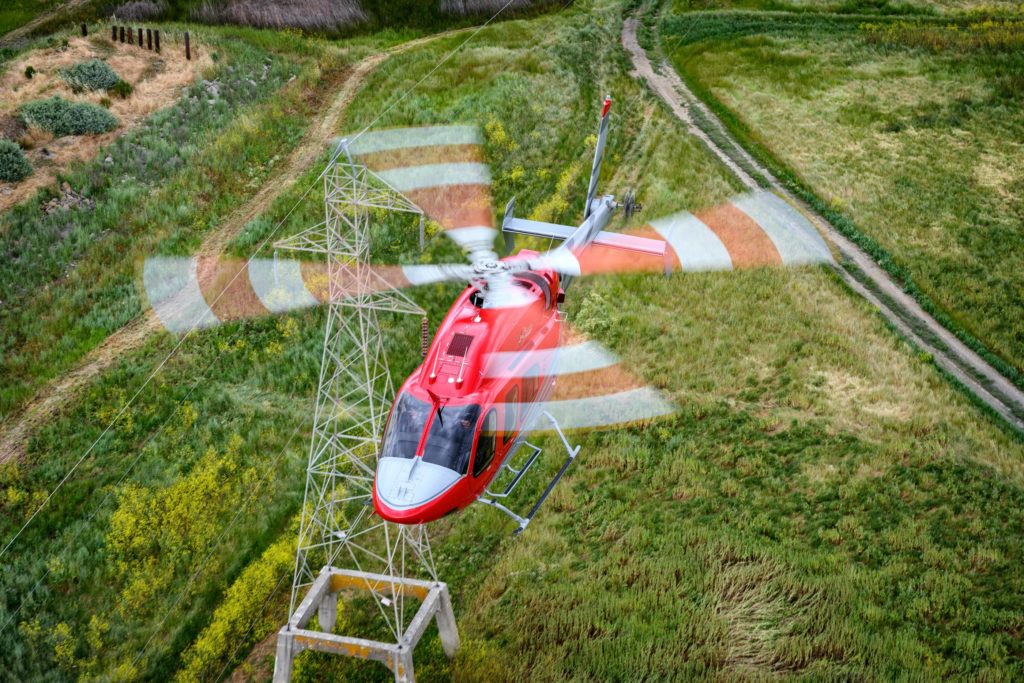
Cherries, for example, are prone to absorbing early morning moisture, which then causes them to burst as the Californian sun heats them up during the day. Helicopter downwash has proved effective at shaking the branches and drying the cherries to prevent the problem.
Similarly, frost can ruin an almond or walnut harvest literally overnight. Flying a helicopter over the orchards in the very early morning, when surface temperatures reach their lowest, disperses the coldest air and can prevent the damage.
But like firefighting, it’s seasonal work, and the narrow time window in which it is effective has knock-on impacts to other business activities.
“We are in the right place to do it, but it’s extremely difficult to provide that service because a lot of that work is done really early in the morning,” explained Casey. “We would love to do more, but it’s hard because it takes a lot out of you during the night that you have to then cover from the day. It’s hard to staff for.”
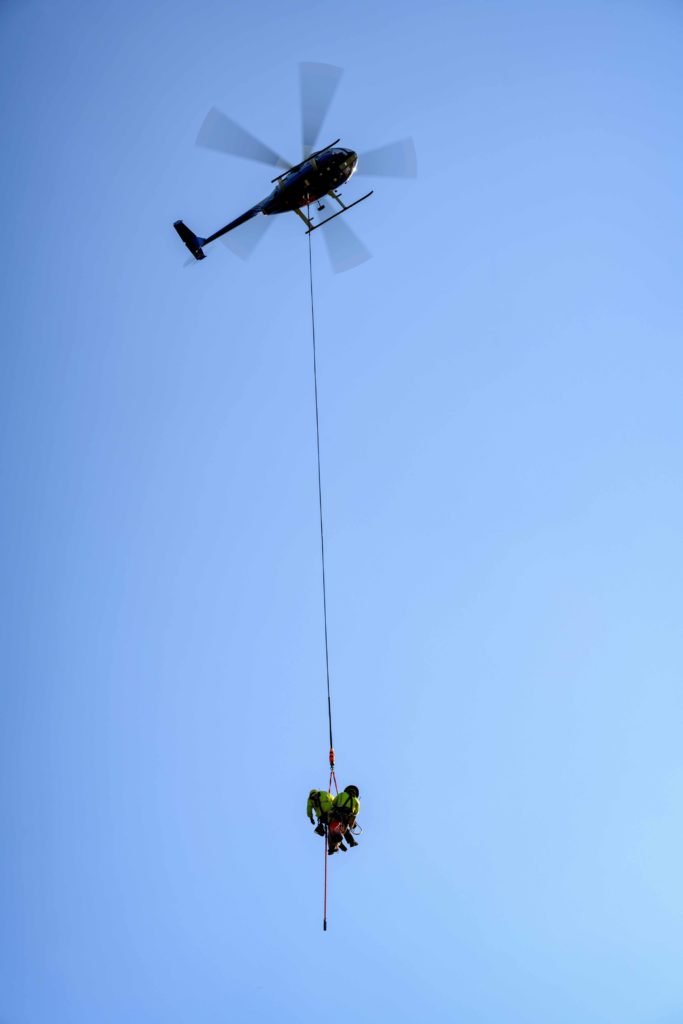
Much more common in practice, but just as unusual in execution, is the task of human external cargo, which Capitol Helicopters undertakes for a variety of customers. The technique is exactly as the name suggests; specially trained personnel can be deployed by lifting them as an external sling-load. Unsurprisingly, it is a highly regulated activity.
“It’s very specific to certain clients,” said Casey. “The aircraft have to be specifically equipped and there’s a separate set of qualification and training guidelines.”
Personnel being deployed in this fashion are attached to a long line that can vary in length between 50 to 100 feet (15 to 30 meters). Two hooks under the aircraft are used and a Y-bridle connected to the single line. A secondary release mechanism is also employed to prevent accidental release of the line, and the person attached.
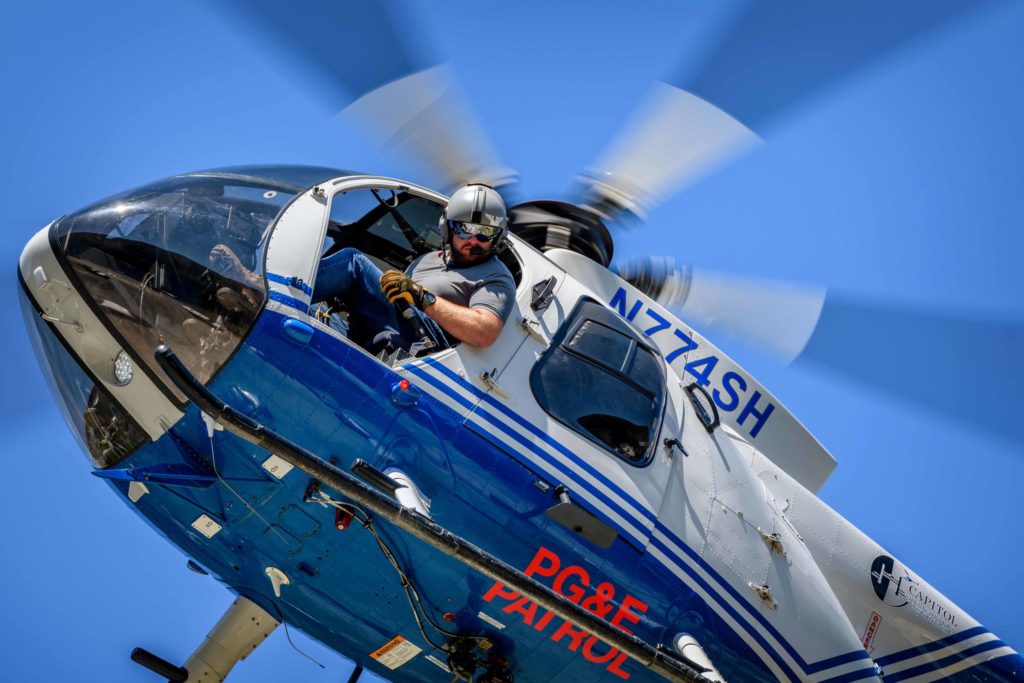
Used by law enforcement agencies, the technique has been widely adopted by power companies for line maintenance in remote areas, as it offers unique flexibility.
“The person can conduct work while they are attached, or they might just get dropped off on a tower,” explained Casey. “It’s necessary for some of the missions and it is becoming a much bigger part of our operation.”
The team works
A readiness to take on new missions and stretch itself seems to sit very deeply in the ethos at Capitol Helicopters. The company’s fleet is three times the size it was two years ago, and the conundrums about aircraft acquisitions have been replaced with questions about how far it is sensible to commit itself; because it is now in high demand.
“Now that we have worked a couple of seasons with certain groups, they are requesting us back, so I feel like we are providing a good service in a safe manner,” explained Kaysha.
Casey too, is optimistic about the future. “We intend to buy up to four more aircraft this year, specifically for utility,” he said. “And we have a general long-term plan to expand our utility operation, which is currently only in California.”
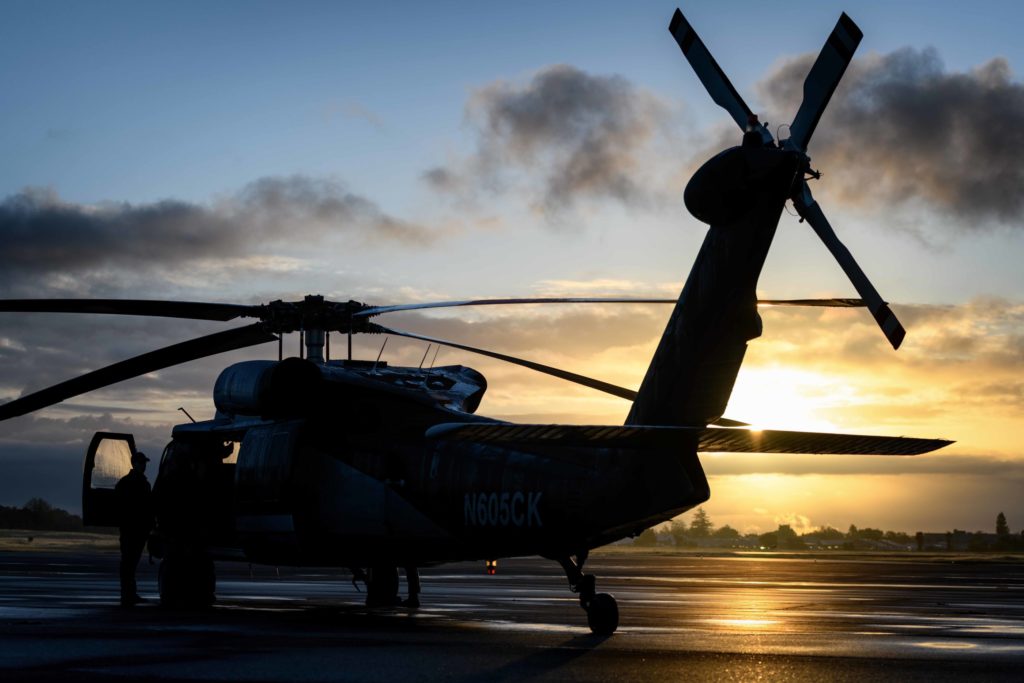
While an expansion in the utility mission doesn’t represent a change in the company’s focus, it certainly didn’t sound like there would be any complaints from Bradley.
“My plan at the moment is to keep doing what I’m doing,” he said. “I love it, I wouldn’t be anywhere different.”








